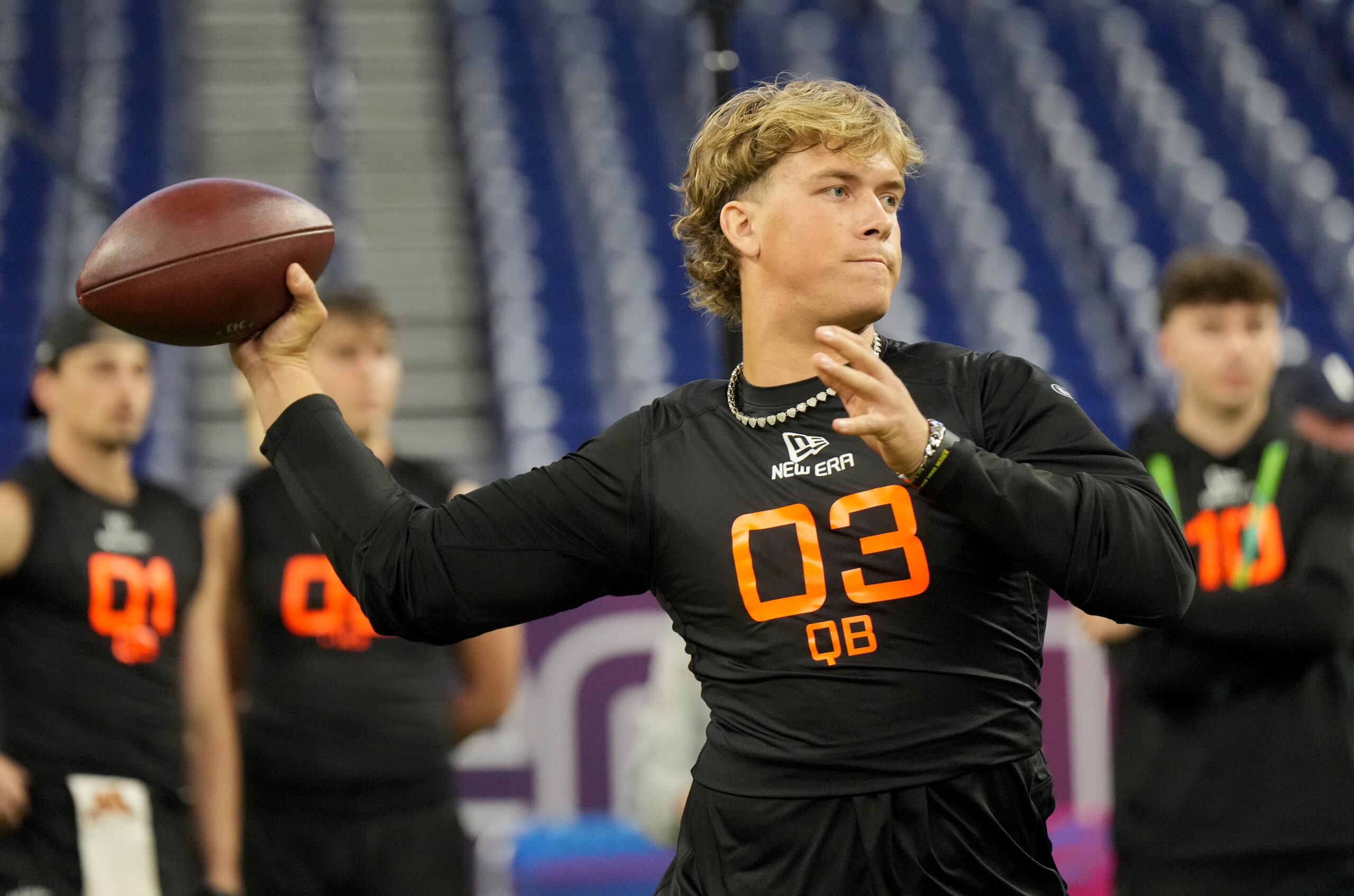Fantasy
1/3/24
6 min read
2023 Fantasy Football: Your Guide to the FFPC Playoff Challenge — Part 1

The Fantasy Football Player’s Championship (FFPC) Playoff Challenge was one of the first forms of playoff best ball. In this format, users select no more than one player from each playoff team to fill a roster consisting of 12 positions.
Roster sizes were expanded by adding two additional FLEX spots when the NFL expanded its playoff field to seven teams from each conference. The roster requirements consist of one quarterback, two running backs, two wide receivers, four FLEX, one tight end, one kicker and one defense.
FPPC uses a tight end premium scoring structure, with each reception at the position worth 1.5 points. That’s it — simple enough, right? There is no salary and no draft; just pick players from each team while leaving two teams out.
But within those basic rules is a slew of theoretical discussions that maximize expected value.
This two-part series will explore what’s important to success in this unique contest. We’ll start by examining how to optimize rosters against the field in Part 1 before shifting to a discussion on the players in Part 2.
FFPC Playoff Challenge Strategy
Positional Importance
| FFPC Scoring (avg) | |
| QB1 | 24.1 |
| QB12 | 18.6 |
| RB1 | 24.5 |
| RB12 | 15.2 |
| WR1 | 23.0 |
| WR12 | 16.7 |
| TE1 | 17.8 |
| TE12 | 12.0 |
The above table compares positional scoring in the FFPC format for this season (through Week 17). By examining the data, we find the QB1 averaged 29.6 percent more points per game (ppg) than the QB12. The RB1 averaged 61.2 percent more ppg than the RB12. The WR1 averaged 37.7 percent more ppg than the WR12. And the TE1 averaged 48.3 percent more than the TE12.
The most valuable positions for this format are quarterback and running back, which makes sense considering those are the two positions where volume is most projectable. That said, you’ll notice the WR12 averaged more PPR points per game than the RB12, meaning the drop-off at the position beyond the elites was bigger.
You’ll also notice the quarterback and wide receiver positions had flatter scoring than running back and tight end. That means the dip in production from the first-ranked player to the 12th-ranked player was less than at running back and tight end.
Importance of Playoff Structure
One of the major differences between FFPC’s playoff best ball format and other formats is the limit placed on the number of players you can select from each team (one).
This format changes how we think about the playoff bracket, how teams advance, who they play and the road to the Super Bowl. Instead of favoring team stacks and Super Bowl correlations, the FFPC format emphasizes games played, which directly correlates to more opportunities for fantasy points.
Even more important than who makes your roster is who is left off your roster.
There are 12 roster spots in this tournament, and 14 NFL teams make the postseason. We are limited to one player per team, which means two teams will remain unaccounted for on each roster in play. So it's paramount the two teams we don’t have play only one game.
That doesn’t mean we should leave out players from teams playing in Super Wild Card weekend; that introduces an interesting theoretical wrinkle to this contest. Basically, the field is likely to omit teams playing on the first weekend of the playoffs as opposed to the two one-seed teams that earned a bye week. That leads to an opportunity to generate meaningful leverage on the field.
Because scoring at kicker and defense/special teams is much lower than at the skill positions, we should aim to have players at kicker and defense play exactly one game. So we should begin the roster-building process with players from teams we project to play just one game, which includes the players from the two teams we leave off rosters.
At quarterback and running back, we should select players from teams we project to play the most games.
Because the maximum number of games a team can play in the postseason is four — and because the only way for that to happen is for one of (or two of) the teams playing in Super Wild Card weekend to make the Super Bowl — optimal theory suggests our quarterbacks and running backs should come from teams that did not earn a bye.
We’ll discuss the process of roster building in the next installment, so we’ll leave that discussion there for now.
Tight end is the lowest-scoring skill position but carries the second-largest difference in PPG between the top and the 12th-ranked producer. The position carries some of the lowest contributions to a roster, but the gap in production would have us limiting exposure to the elites.
There isn’t a “right” answer. It's just something we need to be aware of as we construct rosters. "Limiting exposure to the elites” and “trying to capture an outlier score at the position from a non-elite” have merit.
The FLEX
The expansion of the NFL playoffs led to FFPC expanding its rosters by adding two additional FLEX positions. That increased the available options and the decision points on a roster. More decision points mean more opportunities for mistakes, too.
The data tells us elite running backs score far more points per game than elite wide receivers, but things even out at the bottom tier of RB1 and WR1. There, wide receivers edge out running backs in fantasy PPG.
Without considering matchups, seeding or the playoff bracket, theoretics tell us we should prioritize running backs in the FLEX to the maximum extent possible. That said, this discussion involves considering the median, and we know fantasy football is extremely variant, meaning there is always an edge in searching for leverage.
However, leverage is one of the more misunderstood principles. A median outcome implies the end result will land below the projection and above the projection at equal rates. However, outliers will occur in either direction from the median, which is why we target variance at low ownership.
We place bets on outlier outcomes when the field isn’t and largely avoid those positions when the field is — the basic principle of leverage. We’ll dive further into this discussion in the second installment of this series.
This ties most directly into optimal FLEX utilization. Analytics tell us the optimal FLEX would be four running backs, but we must also consider field tendencies and expected FLEX positional utilization rates.
Optimally, we would select a quarterback and six running backs (two running back positions and four FLEX) that all play multiple games. But that is hard to do and involves immense variance through things like injuries, coaching tendencies, matchups, game flow and game environment. More on this in next week’s article.
The Players
We’ll dive into the actual players and more of the nuts and bolts behind constructing a roster next week. This first installment is to introduce the contest and get readers thinking about the unique format.
We only scratched the surface of the innumerable theoretical decisions at play in this format. Feel free to reach out to me on Twitter (X) or ping me in The 33rd Team Discord channel.






